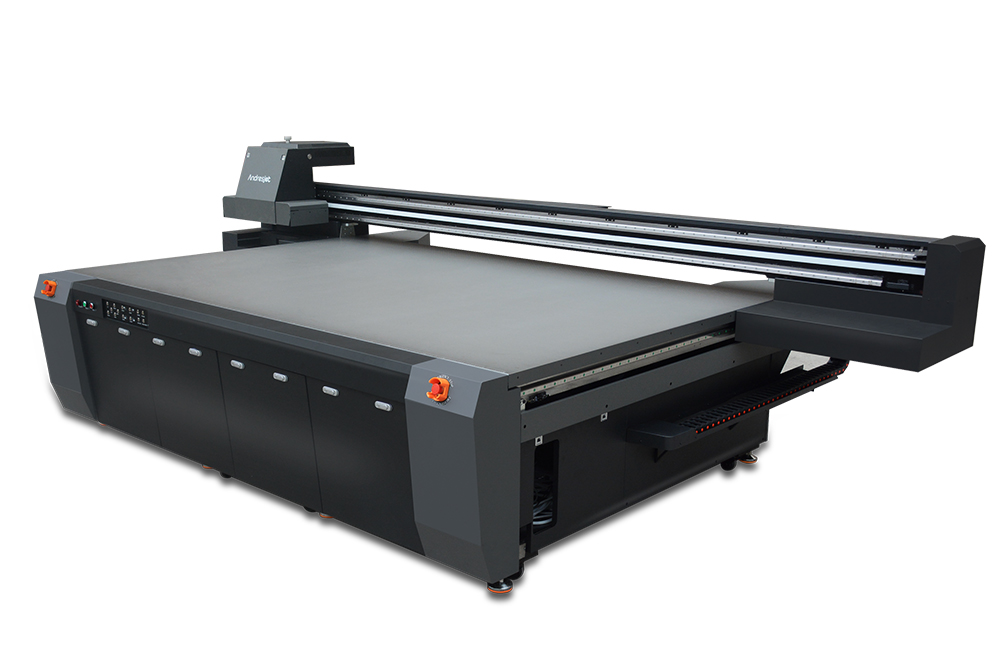How to Ensure Color Consistency in UV Flatbed Printing?
How to Ensure Color Consistency in UV Flatbed Printing?
UV flatbed printing has revolutionized the way we produce high-quality prints on various materials, from rigid substrates like glass and metal to flexible ones such as plastics and fabrics. This technology offers numerous advantages, including fast curing times, exceptional print quality, and the ability to print on a wide range of surfaces. However, achieving consistent color output in UV flatbed printing can be challenging due to several variables that affect the final print appearance. In this article, we will explore the key factors influencing color consistency and provide practical strategies to ensure optimal results.

Understanding UV Flatbed Printing
UV flatbed printers use ultraviolet (UV) light to cure or dry ink instantly after it is applied to the material. This process allows for precise control over ink deposition and rapid curing, enabling high-resolution prints with vibrant colors and sharp details. The inks used in UV flatbed printing are specially formulated to react with UV light, undergoing a chemical transformation from a liquid state to a solid state almost instantaneously.
Factors Influencing Color Consistency
Ink Quality and Type: The quality and type of UV ink significantly impact color consistency. Inks from different manufacturers or even different batches from the same manufacturer can exhibit color variations.
Printer Calibration: Regular calibration of the printer is crucial to maintain color accuracy. Over time, printer components like LED lamps and inkjet nozzles can degrade, affecting color output.
Substrate Material: The material being printed on can influence color appearance. Different substrates absorb ink differently, leading to variations in color saturation and intensity.
Ink Coverage and Thickness: The amount of ink applied and its thickness can alter the final color. Thicker ink layers may appear darker or more saturated.
Environmental Conditions: Temperature and humidity levels in the printing environment can affect ink curing and, consequently, color consistency.
Print Settings and Profiles: Incorrect print settings, such as resolution, ink density, and curing temperature, can lead to color inaccuracies.
Strategies for Ensuring Color Consistency
Use High-Quality, Consistent Inks:
Source UV inks from reputable manufacturers known for their color consistency and quality.
Stick to using the same ink type and brand for all prints to minimize color variation.
Regular Printer Maintenance and Calibration:
Perform routine maintenance checks on the printer, including cleaning nozzles and checking for any wear and tear.
Calibrate the printer regularly using industry-standard color charts and software to ensure accurate color reproduction.
Test Prints on Different Substrates:
Before commencing a large print job, conduct test prints on the specific substrate to assess color appearance and ink adhesion.
Adjust print settings as necessary to achieve desired color consistency across different materials.
Control Environmental Factors:
Maintain a stable printing environment with consistent temperature and humidity levels.
Use environmental control systems if necessary to minimize fluctuations that could affect ink curing and color outcome.
Optimize Print Settings and Profiles:
Develop customized print profiles for different substrates and ink types to ensure optimal color output.
Utilize advanced printer software features, such as color management systems, to fine-tune color accuracy.
Implement Quality Control Measures:
Regularly inspect prints for color consistency, paying attention to details like color uniformity and accuracy.
Use color measurement tools like spectrophotometers to quantify color differences and make adjustments accordingly.
Train Operators:
Provide comprehensive training to printer operators on color management principles and best practices.
Encourage operators to report any color inconsistencies immediately for prompt resolution.
Monitor Ink Usage and Storage:
Store inks in a cool, dark place to prevent degradation.
Keep track of ink usage and replace inks before they expire to avoid color inconsistencies due to aged ink.
Case Study: Ensuring Color Consistency in a High-Volume Production Environment
A large-scale printing company specializing in UV flatbed printing for the advertising industry faced significant challenges in maintaining color consistency across various print jobs. The company printed on a wide range of substrates, including corrugated plastic, aluminum, and acrylic, for outdoor signage. To address the issue, they implemented the following strategies:
They invested in a high-end UV flatbed printer equipped with advanced color management features and calibrated it regularly using industry-standard color charts.
They established a strict ink management system, sourcing inks from a single, reliable manufacturer and monitoring ink usage and storage conditions closely.
They conducted extensive testing on each substrate to develop customized print profiles that optimized color output.
They implemented a rigorous quality control process, inspecting every print for color consistency and using spectrophotometers to measure color accuracy.
As a result of these measures, the company significantly improved color consistency across all print jobs, reducing waste and increasing customer satisfaction. They also reported a reduction in production time due to fewer color-related adjustments and reprints.
Conclusion
Achieving color consistency in UV flatbed printing is a multifaceted challenge that requires attention to detail and a proactive approach. By focusing on ink quality, printer calibration, substrate testing, environmental control, print settings optimization, quality control measures, operator training, and ink management, printers can significantly enhance color consistency and produce high-quality prints that meet or exceed customer expectations. Implementing these strategies not only improves print quality but also enhances operational efficiency and profitability in the long run.
